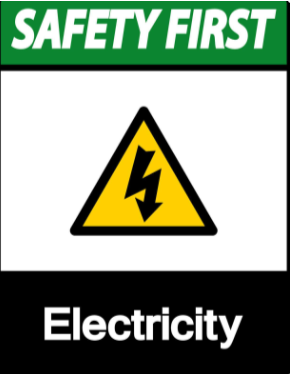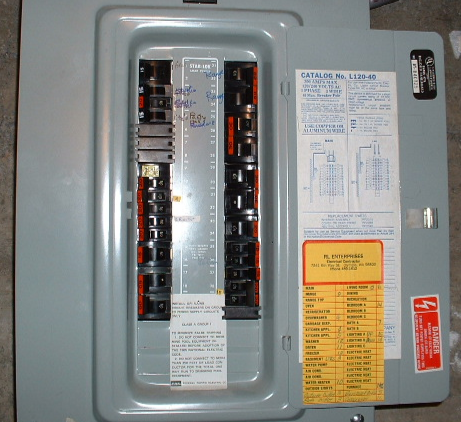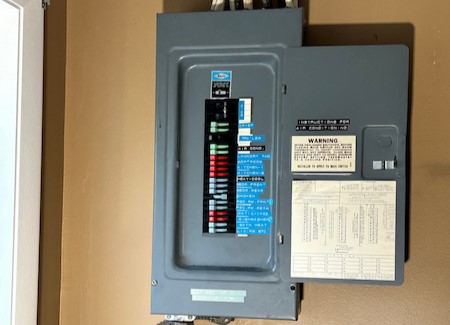You rely on electricity to power your favorite devices, but it can also be dangerous without the right safeguards in place. In fact, most homeowners aren’t aware of what’s going on in the wires behind their walls.

If there’s an issue with the electrical wiring, many people don’t find out until it’s too late…or until a home inspection uncovers a potential problem.
We’re willing to bet that you’re reading this article right now because you were recently informed that the electrical panel on your home is ineligible for insurance. We’re insurance agents—not electricians—so we can’t pass judgment on the safety of your electrical wiring. But many insurance companies will refuse to issue policies on homes that have certain types or models of circuit breaker (models such as Federal Pacific breakers and Zinsco).
Why is that? And what can you do about it?
How Does an Electrical Panel Work?
You know what an electrical panel is and you (hopefully) know where yours is located, but do you know why they’re important?
Electrical panels—also known as breaker panels, load centers, service panels, or breaker boxes—are the housing for your home’s circuit breakers. In the event of a power surge, short circuit, or circuit overload, the breakers are designed to “trip,” which is another way of saying they cut the electricity to that particular circuit.
While it may be irritating to experience a power outage at the moment you’re trying to make your morning cup of coffee, circuit breakers are a vital safety feature that prevent electrical fires.
If a breaker fails to trip, the high amounts of electricity can melt the plastic coating of the wires and spark a fire. The entire electrical panel can also overheat, which can cause it to catch fire.
Put this way, it is easy to see why having a high-quality, reliable electrical panel is so important.
Why Certain Electrical Panels (Such as Federal Pacific Breakers) Are Uninsurable?
If you’re wondering, “Will a Federal Pacific panel pass inspection?” the answer is no.
Electrical fires are one of the top causes for residential fires, and cause an estimated 500 deaths and $1.3 billion in property damage each year. This isn’t a risk that most insurance companies want to take on.
Just like the infamous polybutylene plumbing, some electrical panels have cost insurance companies so much money that they simply refuse to insure them. For them, it’s essentially a losing bet. This is because panels like the Federal Pacific (Stab-Lok) have a history of failing to trip during overloads, which significantly increases the risk of fire.
Which Electrical Panels Are Dangerous?
Despite their importance, there have been a surprising number of electrical panel “fails” over the past few decades. In most cases, the panels work fine for years, giving many homeowners the impression that nothing is wrong. In fact, most aren’t aware of what type of electrical panel they have until they get a 4-point inspection.
So, which are the ones your insurance company won’t touch with a 10-ft. pole?
- Federal Pacific breakers (also known as Stab-Lok breaker panels) were some of the most widely used electrical panels from the 1950’s until the 1980’s. Yet nowadays, they are popular for an entirely different reason.
- Not only do Stab-Lok panels fail to trip during a power surge (failure rates are between 25-65%), they can fail to switch off power when the switch is in the “off” position, resulting in electrocution.
- Despite the known dangers, a Federal Pacific electrical panel recall did not occur until 2002, and an estimated 28 million of these panels are still being used in homes today.
- Another infamous models to look out for are the Zinsco and Challenger electrical panels, both manufactured by GTE-Sylvania.



- Identification:
- Federal Pacific breakers have a distinct red “Stab-Lok” label.
- Zinsco and Challenger breakers often have a silver or gray faceplate.
- Building codes have changed since the 1970’s and many older electrical panels simply do not meet modern standards.
Replacing Your Electrical Panel
While there are some insurance companies that will provide coverage on homes with these types of electrical panels, most homeowners prefer to have them replaced.
After all, the average cost of replacing an electrical panel is around $1,100 and you’ll have the added benefit of more choices when it comes time to renew your policy.
If you suspect that your home might have a recalled or outdated electrical panel, don’t try to replace it yourself as your weekend project! Instead, have it examined and replaced by a qualified electrician.
Conclusion
Electricity is part of what makes our modern-day lifestyle possible. But having good insurance coverage is just as important as having safe electrical wiring.
